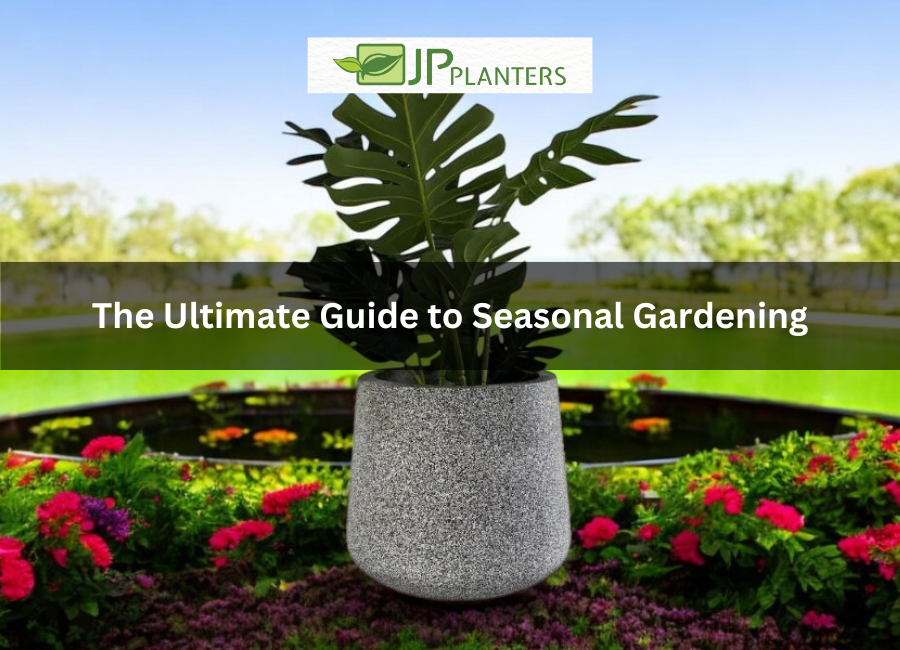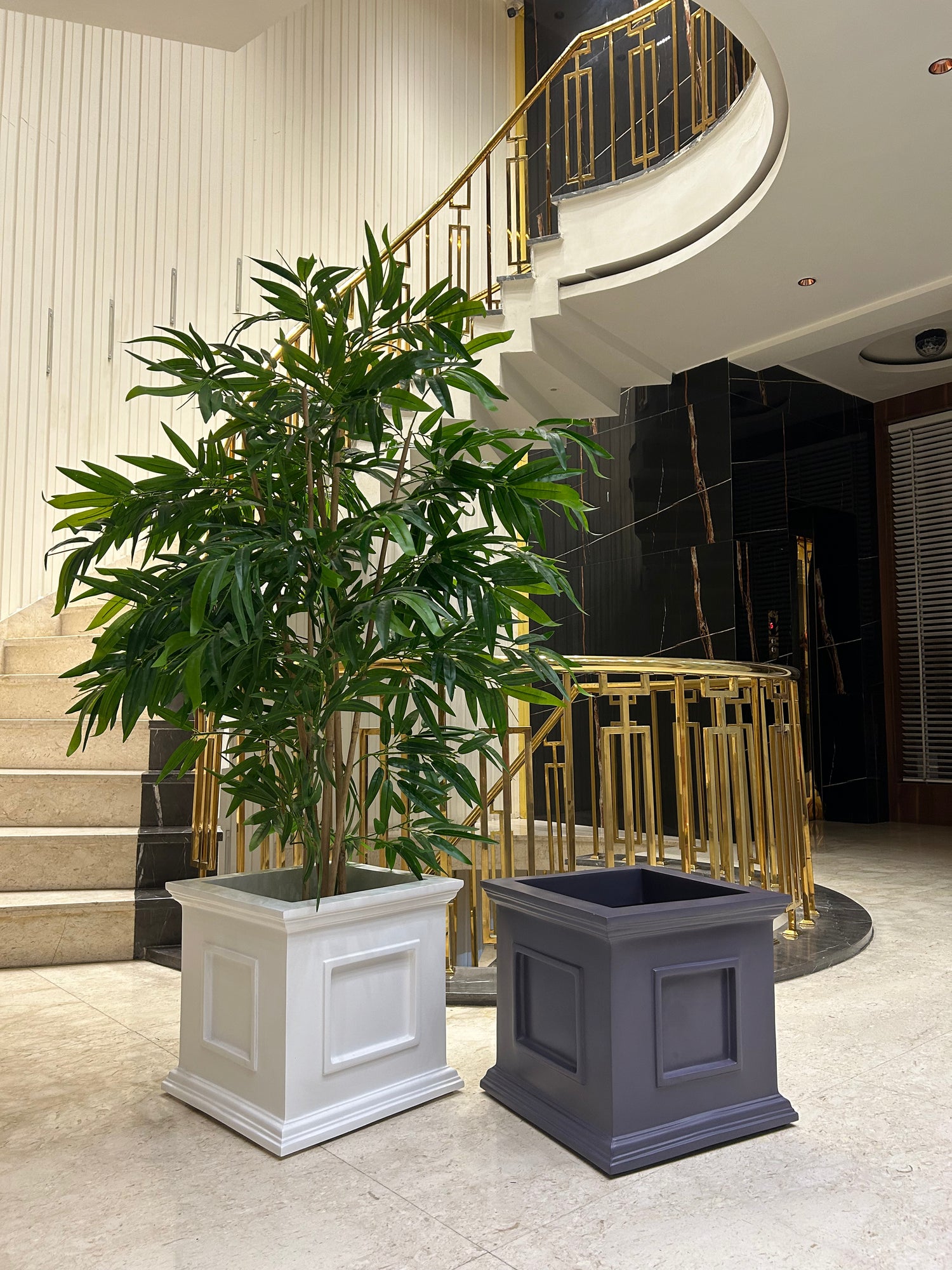
The Ultimate Guide to Seasonal Gardening
Share
Seasonal gardening is a rewarding journey that lets you connect deeply with nature’s rhythm. Whether you're a novice or an experienced gardener, cultivating a garden that thrives throughout the year requires careful planning and thoughtful execution. In this comprehensive guide, we’ll explore the essentials of seasonal gardening, the role of versatile tools like fiberglass planters, and innovative design tips for creating a stunning outdoor spaces.
What is Seasonal Gardening?
Seasonal gardening involves tailoring your gardening practices to align with the changing seasons. By understanding your local climate and the growth patterns of various plants, you can:
- Enjoy year-round blooms and harvests.
- Enhance your garden’s visual appeal through seasonal color schemes.
- Optimize plant health and soil fertility.
- Reduce maintenance by working with plants that naturally thrive during specific seasons.
For beginners, this approach eliminates much of the trial-and-error frustration of gardening. For experienced gardeners, it’s an opportunity to experiment with new plants and designs.
Why Choose Fiberglass Planters for Seasonal Gardening?
Fiberglass planters have emerged as a go-to choice for modern gardeners due to their unmatched versatility and durability. Here's why they stand out:
- Lightweight and Durable: Unlike traditional materials, fiberglass planters are lightweight, making them easy to move around for seasonal transitions while withstanding harsh weather conditions such as frost or intense heat.
- Eco-Friendly: Made from sustainable materials that minimize environmental impact, these planters are a long-term investment in green living.
- Design Versatility: Available in a plethora of shapes, sizes, and finishes to complement any garden style—from modern minimalist to rustic charm.
- Low Maintenance: Resistant to chipping, cracking, and fading, they retain their appeal with minimal upkeep.
Tip: Use fiberglass planters to create dynamic focal points in your garden that adapt seamlessly to seasonal changes.
Seasonal Plant Recommendations
Selecting the right plants for each season is crucial for a thriving garden. Here’s a handy table to guide your choices:
|
Season |
Recommended Plants |
Ideal Planter Type |
|
Spring |
Tulips, Daffodils, Lettuce, Peas |
Rectangular plant pots |
|
Summer |
Roses, Tomatoes, Zinnias, Basil |
Large planters |
|
Fall |
Chrysanthemums, Kale, Pumpkins |
Fiberglass planters |
|
Winter |
Pansies, Cyclamen, Evergreens |
Insulated fiberglass pots |
Spring Tip: Combine bulbs like tulips with early-blooming annuals for vibrant displays.
Summer Tip: Use large planters for heat-loving plants like basil and zinnias, ensuring adequate drainage to prevent waterlogging.
Fall Tip: Opt for hardy plants like kale and chrysanthemums that bring structure and color as other plants fade.
Winter Tip: Insulate your fiberglass planters to protect roots from freezing temperatures and use evergreens for year-round greenery.
Design Tips for Arranging Rectangular Plant Pots and Large Planters
Arranging planters strategically can transform your garden’s aesthetics. Here are some design ideas:
- Layering: Place larger planters at the back and smaller ones in front to create depth and dimension in your garden.
- Zoning: Use rectangular plant pots to delineate specific areas, such as herb gardens, floral displays, or vegetable patches. This creates an organized and functional layout.
- Color Coordination: Match planter colors with seasonal blooms for a cohesive look. For instance, neutral-colored fiberglass planters pair beautifully with vibrant summer flowers.
- Height Variation: Mix planters of varying heights to add visual interest and prevent a flat appearance.
Example: Arrange rectangular plant pots with lavender and rosemary along a garden path, interspersed with large planters filled with ornamental grasses for texture.
Transitioning Between Seasons
Smooth seasonal transitions require careful planning. Follow these steps to keep your garden thriving:
- Evaluate and Clean: Remove spent plants, weeds, and debris from planters to prevent pests and diseases from overwintering.
- Revitalize Soil: Refresh the soil by adding compost or seasonal-specific fertilizers to replenish nutrients.
- Rotate Crops: Swap out annuals for fresh seasonal selections to maintain soil health and reduce pest problems.
- Reposition Planters: Take advantage of lightweight fiberglass planters by rearranging them to suit seasonal light conditions and design changes.
- Prune and Mulch: Trim perennials and add mulch to retain soil moisture and regulate temperature changes.
Tip: Incorporate cover crops like clover during off-seasons to enrich soil naturally and prevent erosion.
Eco-Friendly Practices for Seasonal Gardening
Sustainability is at the heart of effective gardening. Adopt these eco-friendly practices to reduce your environmental footprint:
- Water Conservation: Use drip irrigation, rain barrels, and mulch to retain soil moisture and reduce water usage.
- Composting: Recycle garden waste to create nutrient-rich compost that enriches your soil without chemical fertilizers.
- Sustainable Planters: Opt for durable materials like fiberglass planters to minimize waste and promote longevity.
- Native Plants: Favor native and drought-resistant plants to support local ecosystems and reduce maintenance.
- Integrated Pest Management: Encourage beneficial insects like ladybugs and avoid chemical pesticides.
Innovative Ideas for Seasonal Gardening
- Vertical Gardens: Use rectangular plant pots for vertical setups to maximize small spaces. These can host trailing plants like ivy or compact herbs like thyme.
- Mobile Gardens: Arrange large planters on wheels for flexibility. Perfect for urban gardens or patios, these mobile units can be shifted to follow the sun or create temporary focal points.
- Multi-Functional Spaces: Incorporate planters into seating or fencing designs. For instance, a bench with built-in planters adds both greenery and functionality to your garden.
- Edible Ornamentals: Blend aesthetics with utility by planting edible ornamentals like kale and chard in decorative fiberglass planters.
Conclusion
Seasonal gardening is more than just a hobby—it’s a lifestyle that brings joy, sustainability, and beauty to your outdoor space. By integrating durable fiberglass planters, strategically arranging rectangular plant pots, and adopting eco-friendly practices, you can create a garden that flourishes all year long.
Whether you’re looking to enhance a compact balcony or a sprawling backyard, the principles of seasonal gardening will guide you in making the most of your space. Ready to transform your garden? Share your seasonal gardening experiences with us or visit our website for more expert tips and premium planter options!





